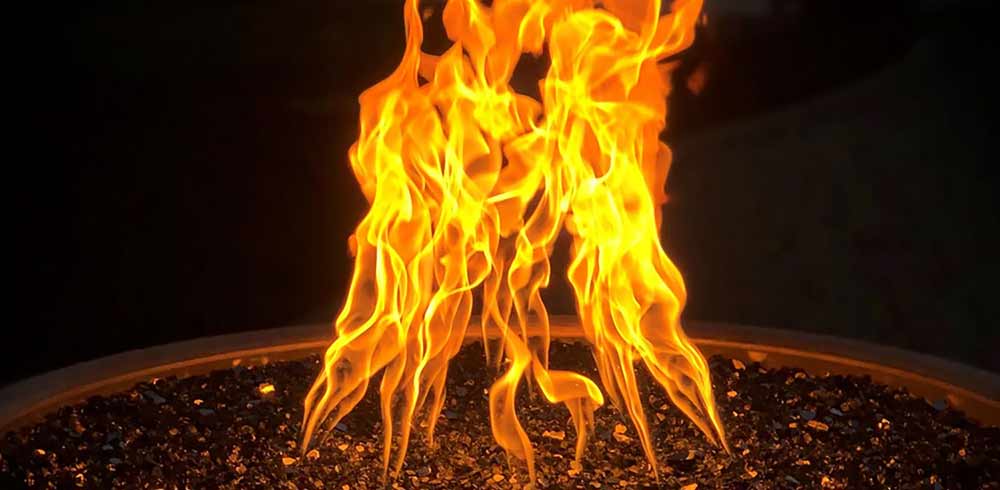
When setting up or maintaining a fire pit, understanding the function and installation of the burner is essential. This article answers some of the most common questions about fire pit burners—from choosing the right one to properly installing and covering it. Whether you’re looking to enhance your outdoor ambiance or ensure efficient heat distribution, we’ll help you make informed decisions.
What is the Function of a Burner?

The burner is the core component of a gas fire pit and is responsible for producing the flame. It works by distributing gas (natural gas or propane) through a series of ports or holes, where the gas is ignited to create a controlled fire. The burner's design influences the flame’s appearance, heat distribution, and overall performance of the fire pit.
How Deep Should a Fire Pit Burner Be?

Generally, the burner should be placed 2 to 4 inches below the top edge of the fire pit. This depth ensures the flame is visible and well-contained while providing enough space for fire media (like lava rocks or fire glass) to cover the burner without obstructing the gas flow. However, the exact depth depends on the fire pit type and the desired flame effect. Always follow the manufacturer’s guidelines or consult a professional to ensure safety.
You can install the burner deeper if your fire pit is deeper—just ensure the flame remains effective and aesthetically pleasing.
How Do I Choose a Fire Pit Burner?

Choosing the right fire pit burner involves several considerations:
- Shape and Size: Match the burner to your fire pit’s shape and size. Common shapes include round, square, rectangular, and linear. Size the burner to the fire pit’s dimensions for even heat distribution. For a deeper dive on shapes, see this guide.
- Material: Most burners are stainless steel or brass. Stainless steel is durable and corrosion-resistant for typical outdoor use. Brass offers excellent corrosion resistance and heat retention—often preferred in coastal environments.
- Heat Output: Check the BTU rating. Higher BTUs yield more heat—important for larger fire pits or colder climates.
- Ignition System: Options include match light (manual) and electronic ignition (push-button convenience).
- Budget: Prices vary by material, size, and brand. Choose the best balance of quality and cost for your needs.
Do You Cover the Burner in a Fire Pit?

Yes. Cover the burner with media such as lava rock, fire glass, or ceramic logs. For extra protection when not in use, add a burner cover. Covering the burner provides:
- Aesthetics: Media enhances the look, creates a natural flame pattern, and hides the burner.
- Heat Distribution: Media helps spread heat more evenly across the fire pit.
- Protection: Media and covers shield the burner from debris and weather, extending its lifespan.
More Information on Fire Pit Burners
The fire pit burner is the centerpiece of any gas fire pit—key to both performance and visual appeal. Knowing how it operates, how to select the right model, and how to maintain it will help you make the best choice for your outdoor space. If you have questions or want personalized assistance, our certified product specialists are here to help. We’re available 8 a.m. to 5 p.m. CT, Monday through Friday, or you can reach out via email anytime.


